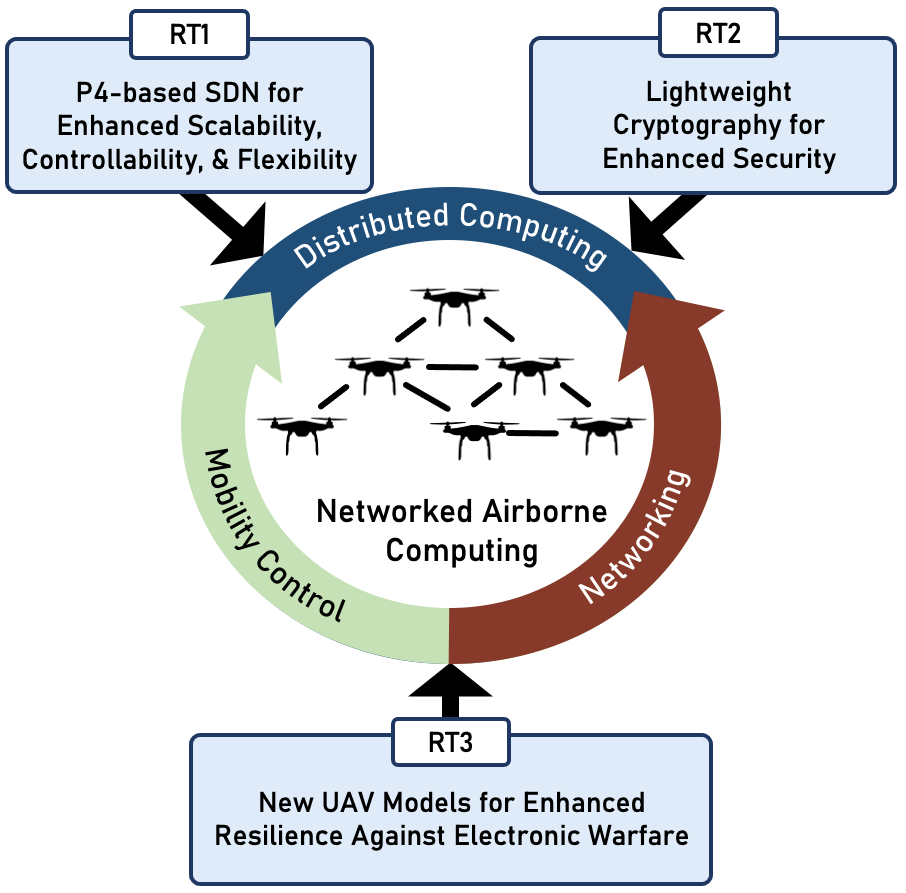Networked Airborne Computing in Uncertain Airspace: A Control and Networking Facilitated Distributed Computing Framework
International Multilateral Partnerships for Resilient Education and Science System in Ukraine (IMPRESS-U)
The project is suplementary to the original NSF project (NSF no. 2048266), which seeks to broaden the scope of the original project to further tackle three key technical challenges: scalability, security, resilience against electronic warfare.
This project addresses these new challenges through close collaboration with leading experts in network security, network management, embedded systems, and complex network modeling from Poland and Ukraine.

The intellectual merit of the proposed project lies in the deliverables of three research thrusts (RTs):
RT1. P4-based Software Defined Networking for Enhanced Scalability, Controllability, and Flexibility: As the NAC network scales up, managing it efficiently for concurrent execution of multiple computation tasks becomes increasingly challenging. To overcome this, we harness the power of the Protocol-independent Packet Processor Programming (P4) language to construct software-defined NAC networks.
RT2. Lightweight Cryptography Algorithms for Enhanced Security: The limited payload capacity of UAVs restricts the resources they can carry, rendering resource-intensive traditional cryptography algorithms impractical. We will address the challenge by exploiting lightweight cryptography algorithms and their seamless integration into the NAC network to achieve secure data processing and transmission.
RT3. New UAV Models for Enhanced Resilience Against Electronic Warfare (EW): We propose advanced UAV models that account for potential EW system influence to bolster the NAC network’s resilience against Russian EW.

RT1: scalability
Managing the NAC network becomes increasingly challenging as it scales up, due to unique features of airborne networks such as high node mobility, network heterogeneity, frequent topology changes, and high-dimensional uncertainties

RT2: security
The information exchanged among the UAVs via direct flight-to-flight links faces the risk of compromise by potential eavesdroppers; and

RT3: resilience against electronic warfare
The deployment of the NAC network in Ukraine is challenged by the presence of Russian electronic warfare (EW) systems, which pose significant threats to UAV operations as UAVs frequently capture sensitive data, such as images, videos, and location information, whose confidentiality and integrity can be easily compromised.



